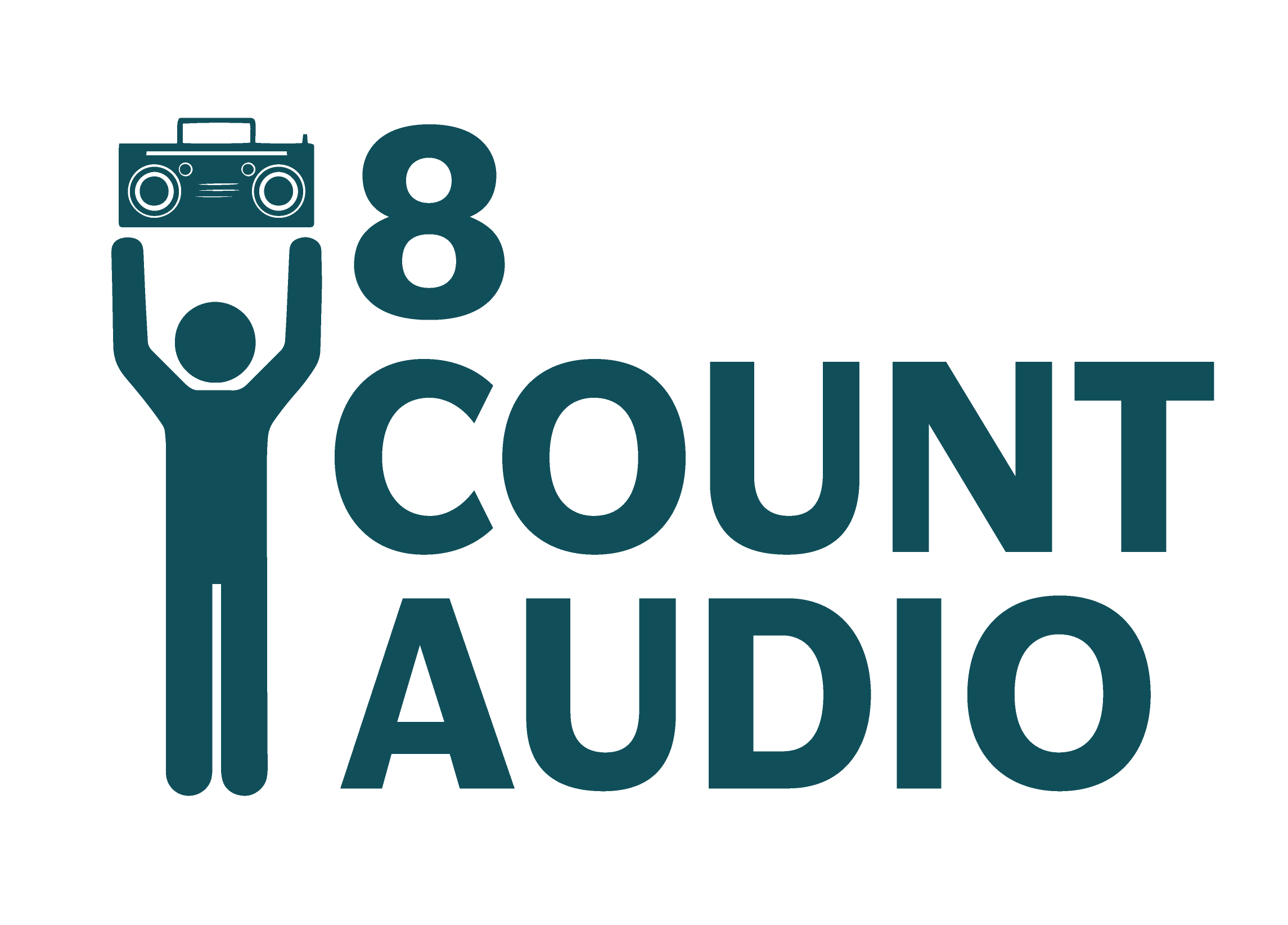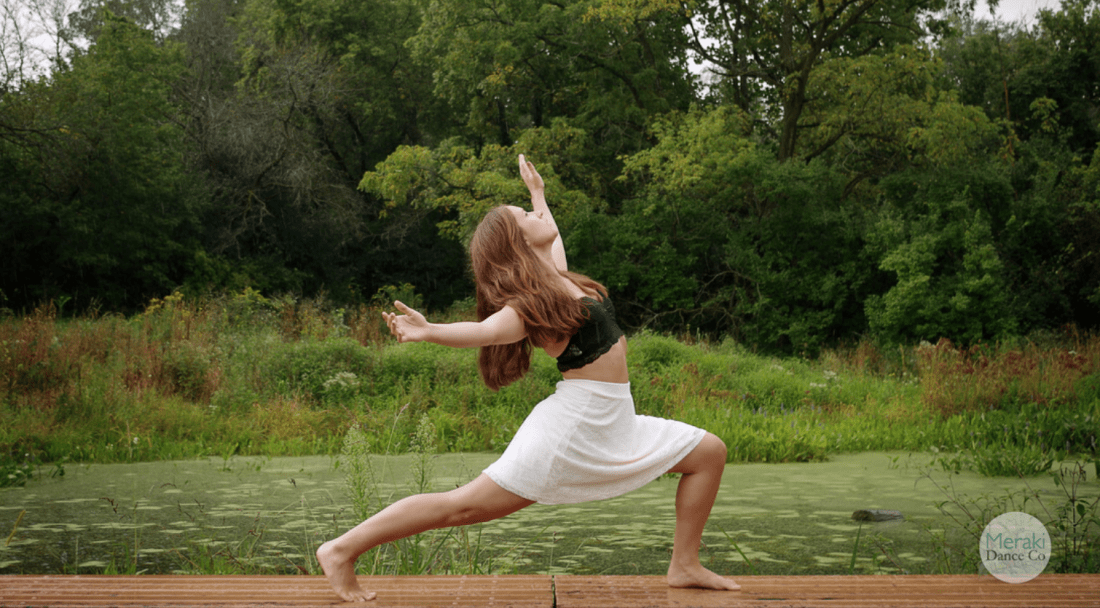From Inspiration To Stage: What It Takes To Actually Produce A Show
Choreography is just one piece of the puzzle when it comes to putting on a dance company’s annual show
by Norm Ramil / 8ca music person & dance fan
When you’re sitting in that dark theatre taking in a dance production, all the behind-the-scenes stuff stays…behind the scenes, like it should. But countless hours go into everything the audience enjoys that night. It starts with choreography, and Meraki Dance Company founder Kristen Baron was kind enough to share how she gets inspired to create pieces and how these dances later evolve. Beyond the dances and the hours of physical and mental work in rehearsal, a Meraki show takes intense planning. From lighting to stage managing and even just securing a venue, Kristen juggles a myriad of details to produce her company’s annual performances. And that’s on top of choreographing and dancing.
The talented Meraki dancers hit the stage this weekend at Madison Street Theatre in Oak Park. Last year’s show was inspiring and we can’t wait to see this year’s show! Grab your tickets for “Stillness In The Chaos,” available now at merakidancecompany.com. Performances run Saturday night and Sunday afternoon!
NR: Can you give us an example of what your choreography process is like?
KB: For Meraki pieces, I wait for things to come to me; I don’t look for them (dance team’s totally different where you have a timetable). Meraki’s such a long season. So for instance in the show you’ll see a piece that’s a duet and it’s literally my entire life this year. The piece is called “Mundane Mondays.” It just came to me because I was so overwhelmed with the cyclical process of my day from teaching to coaching all night to come home to work on Meraki while taking care of a baby, while in grad school…that “I am so stressed about my life right now that I’m going to put it in a piece.”
And that’s why dance is so cool. You don’t need to let the audience know it’s about you. But I put all my frustrations in that dance. It’s actually a lot of comic relief in the dancing. I didn’t want it to be comic relief, but the dancers themselves and other people when they watch the piece, they end up laughing because they’re so stressed that’s it’s funny.
NR: In addition to the concept, how do you handle the music?
KB: I knew I needed a song that was instrumental only, super repetitive. I’m big on music: your music has to fit your storyline to a T. So I never go music, storyline. That goes for [both] coaching and Meraki. It comes from the heart first. Like, what am I telling somebody? If you can’t write a full page of exactly what you’re trying to get across, you’re not ready for the music, in my opinion.
So once I’m ready to tell my story, I pick music. And then I block from beginning to end, second by second. Then I choreograph the first block straight through so it’s memorized in my own body. Then I set it on all the dancers. I try to set a whole piece as fast as I can because I’m so excited about it, I want it out of my body. So if I don’t set it in one day, I set it in one to three days.
Once it’s set on them and they can perform it full-out (and this goes for coaching and for Meraki), I add layers, and layers, and layers, until I’m like, that’s what I was going for. The first product is never even close to what I want.
NR: It sounds like whether you mean to or not, there’s going to be an element of catharsis in it, you know, going inside-out.
KB: Yup! So if I don’t create the storyline, I can’t ask them to dig deep, because I didn’t create it, and they won’t be able to ask me questions about it. So I always like to be the creator of the storyline.
NR: If there’s a storyline that’s the choreographer’s, does the piece still get to evolve?
KB: Yes. That just happened with my duet. It’s literally taking you through your day, like brushing your teeth, eating, getting dressed. So the dancers are emulating my stress, and they’re relating it to their own stress. They both happen to be school teachers. It totally turned into something different…I’m like, “I didn’t want exactly that, but this is cool!” They act it so well, they’re making noises, and sometimes they can’t get their clothes on in the amount of time I give them in eight-counts. Then I look at it again and I’m like, ohhh, at times this has almost turned into a funny piece. But I love it when that happens because I’m too stuck in my ways as a person. And so when it veers into something else, it’s awesome.
NR: So by the time it ends up on stage, sometimes it’s your creation, and sometimes it’s turned into a collaboration.
KB: Yeah. I tell them my storyline, and if that person connects to it so well, they make it so much their own, that’s when it turns into something else because their story is different from my story.
NR: What’s the process of actually putting together a show, starting with lighting?
KB: You’ve got to have really good people lined up. A show is not a show without excellent lighting, period. You have to make contact with multiple lighting designers just in case. That lighting designer is gonna come to your final studio rehearsal, they’re gonna watch every dance and ask questions directly to the choreographer, not to me (I let the choreographers do their own lighting). And then we’re gonna write out second-by-second light cues.
I’m going to go in a week early and sit with the lighting designer because I know the pieces visually very well. On a black stage she adds the lighting that the choreographer’s listed out.
A huge part of the show is costuming as well. Meraki pulls from our own closets. But I’m finding that choreographers are so specific in what they want, like it’s gotta be “sheer this, that color of gray.” I’m like, I’m not gonna have that in my closet! This year I ended up taking old costumes and I dyed them! So we always end up having whatever they need.
NR: In terms of costumes do your choreographers go for a certain look, depending on the piece?
KB: I’ve never liked dancers all wearing the same thing. Takes away from the story. Otherwise, you’d be watching and go, who’s this person supposed to be? And if you ever see a professional dance show (other than ballet), none of them are wearing the exact same thing. We list a color and a clothing style, and then the individual dancer pulls from their own closet.
We have an in-studio dress rehearsal day where we all put on our outfits. We practice the alloted time for quick changes. It’s all the cool stuff the audience doesn’t see. We have a runaround in the show. So if you exited stage left in “Dress A,” and if you’re in a back spec number in “Dress B” that’s over there, you’re doing a runaround, throwing on the dress and going back out the other side of the stage. And to the audience it’s like, “Oh, you appeared!” Meanwhile, we’re in the runaround screaming for people to get out of our way.
NR: Is that the most chaotic aspect of performance night?
KB: No! That’s all positive stress; that’s like low on my stress level. Just time management, period. I am the stage manager. So I’m on the mic the whole show but I’m dancing in the show, I’m choreographing the show, and I’m in charge of locking up the lobby, tickets, somebody needs a wheelchair seat…anything that has to do with customer service, it’s me. But say something goes wrong with the lighting, I’m on the side of the stage cueing. The hardest part is wearing all the hats at the same time, and having to cue on the mic, put the mic down, and then go dance.
NR: Sounds complicated!
KB: It is. You just hope you remember your dance. When I was with other companies, it was always like, How did I do? Don’t mess up, don’t mess up. And at Meraki’s show, I would rather me mess up on stage than something go wrong with lighting or a customer be unsatisfied…that stuff is much more important to me than if I miss a phrase on stage.
NR: What’s the most satisfying part of the evening?
KB: Hands down…I can tear up just thinking about it. It has nothing to do with me on stage, with the audience. It’s happened every year. I’m in the wing as the stage manager. It’s a dance that I’m not in. I’m on the mic and I’m cueing. And I have to physically take the mic off because I’m crying. It’s usually on opening night. Because I’m seeing a dance through a totally different lens. And the dancers just turn it on on the stage. But dancers dance differently on stage than they do in studio rehearsal. It’s like the state floor–that energy, you can’t replicate it. And I’ve got the best seat in the house.
NR: Has there ever been a comment from an audience member that really stuck with you?
KB: Year one, it was a dancer’s family friend. She was never a dancer. She grabbed both of my hands and said, “I feel this is something that everybody needs to see. This passion you see on the stage, it’s different than anything I’ve experienced live.” And it wasn’t from a technical aspect, she said, or from an accomplished dancer aspect. It was just from what she felt the dancers give her.
Meraki’s been through a really rough time the past three years. We’ve had really unfortunate deaths and other things that have occurred, and I think they put that on stage. Our dancers have cried on stage because of these tragedies. They’re emoting all of that, and I think that’s what that stranger was feeling. It was an inexplicable transfer of energy, is the best way I can explain it.
NR: So with all the things that have to go on to even put on a show, I’ve got to ask about the dancers. Is it challenging for those who are beyond their high school and college years?
KB: My dancers that are beyond that age are very eye grabbing because they felt it (dance) leave their life a little bit. And they get after it. So honestly it’s quite different than I would’ve ever imagined. They’re physically my strongest dancers.
NR: Tell me about the venue, Madison Street Theatre. A lot of vibe there.
KB: This is a passion project for me. Other places are a lot cheaper. Madison Street only rents out by the week. I break even. Renting a theatre for an entire week with a lighting designer has been difficult.
They sold me on the walk-through. It’s such an old building, it’s a huge part of the community, it’s rented out every single week. To get into Madison Street I had to send an email on May 1st, 2017 with a contract and a huge deposit. And you’re like, will I even have a company next year? And I have a baby on the way…
But it’s tradition now. It seats about 180 and no matter what seat you’re in, you can see. Lots of spaces in Chicago, they’re flat, so you’re buying tickets and you can’t see. Most affordable spaces in Chicago have wood floors where you’re not allowed to tape marley on. We’re a modern contemporary company, we need marley. So I own my own marley. It lives in my basement, I lift it into my car myself, I bring it into the theatre and all my dancers lay it out.
They let me contract out my own lighting designer, my own ticket sales people. They give me the key for seven days. Expensive, but still…if I can’t sleep at night and I want to drive down there at midnight to look at lighting one last time, I can do it.
NR: I like how Meraki’s a suburban entity, but this show lets the audience have a little bit of that city feel in an artistic place like Oak Park.
KB: I agree and when I walked in there, the stuff you can’t see in that show, like in the wings, every inch of every wall is written on by the artists. They allow that. It’s painted over multiple times because there’s been so many artists. It such an artistic space, and sometimes I’ll go see other things there like plays to help me get out of my headspace and get inspired.
Coming up in part 3: all about the dancers’ experience in preparing for and performing in the show!


